April
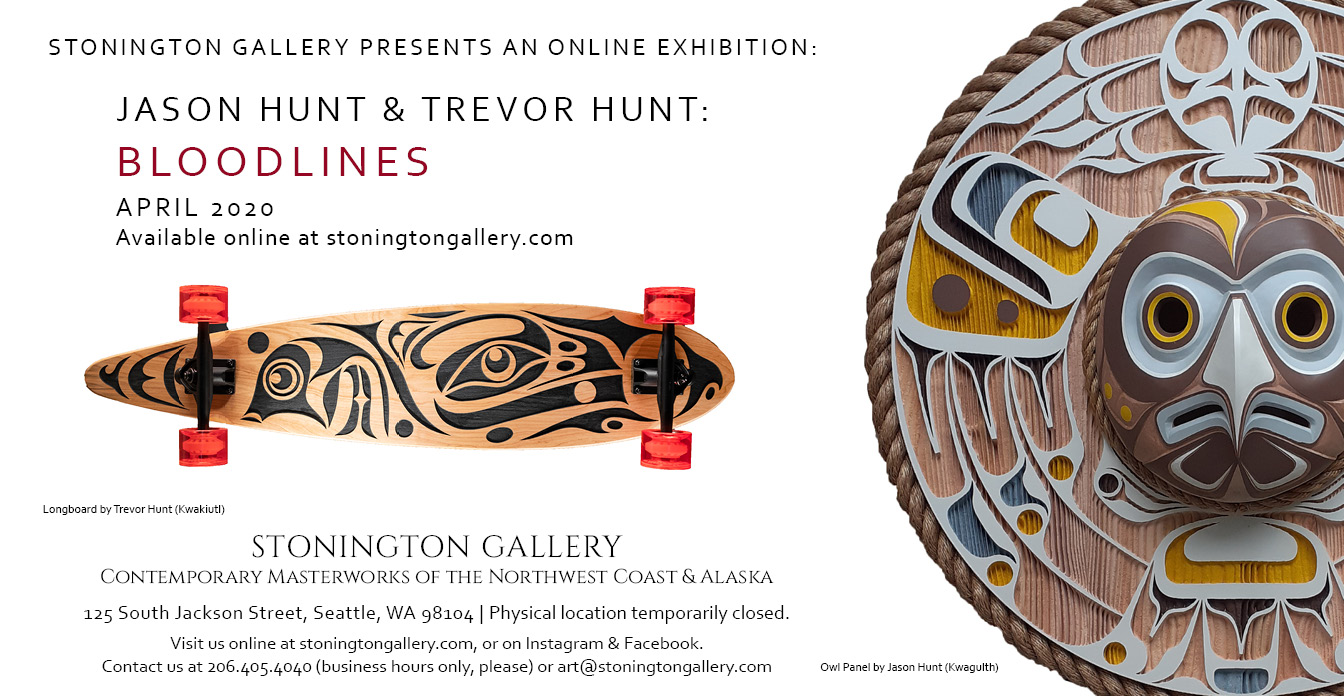
In April we feature brothers Jason Hunt and Trevor Hunt, who hail from the famed artistic lineage of the Hunt family of Fort Rupert on Vancouver Island (BC). Many of the brothers’ family members–including father Stan Hunt–are renowned artists known for their incredible masks, panels, paddles, and drums, and these two continue that tradition with modern flair and tools. We look forward to seeing what kinds of spectacular Vancouver Island-style works will emerge for this joint show. Learn more about the family and the brothers below.
Please Note: Due to COVID-19 the exhibition will occur online, and there will be no First Thursday Artwalk. We and the artists especially appreciate your patronage at this challenging time!
Exhibition Dates:
April 1, 2020 - April 30, 2020Involved Artists:
Featured Works
-
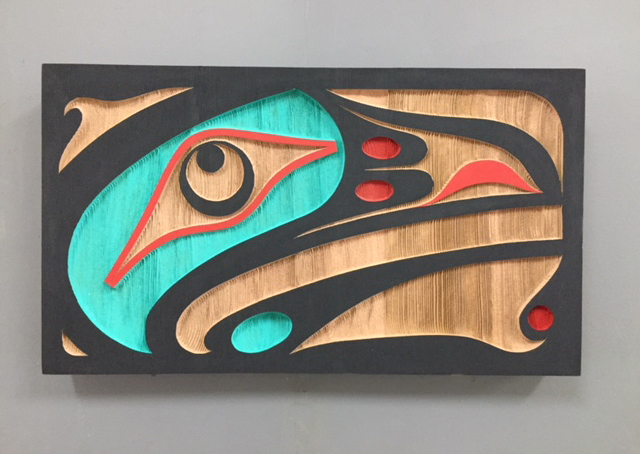 Trevor HuntRaven Panel (Wide)Sandblasted Cedar Panel, Acrylic
Trevor HuntRaven Panel (Wide)Sandblasted Cedar Panel, Acrylic- 10"h
- 18"w
SOLD -
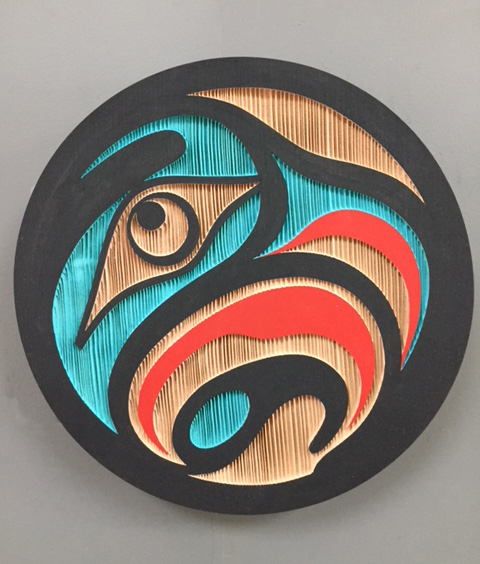 Trevor HuntEagle PanelSandblasted Cedar Panel, Acrylic
Trevor HuntEagle PanelSandblasted Cedar Panel, Acrylic- 12"h
- 12"w
SOLD -
 Jason Henry HuntOwl MoonSandblasted Western Red Cedar, Acrylic, Rope
Jason Henry HuntOwl MoonSandblasted Western Red Cedar, Acrylic, Rope- 40"h
- 40"w
- 2"d
SOLD -
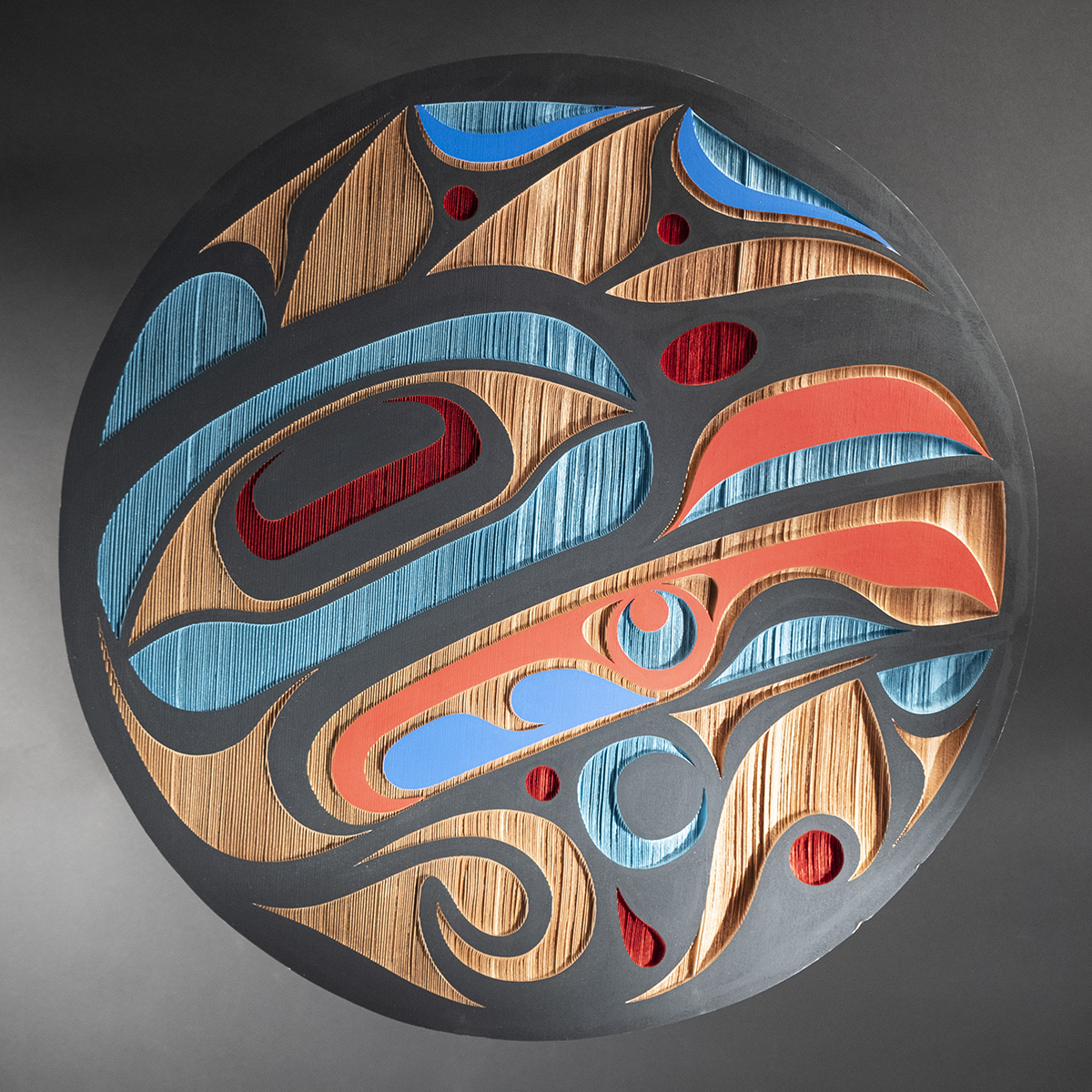 Trevor HuntRaven PanelSandblasted Red Cedar, Acrylic
Trevor HuntRaven PanelSandblasted Red Cedar, Acrylic- 23.38"h
- 23.38"w
- 1.38"d
SOLD -
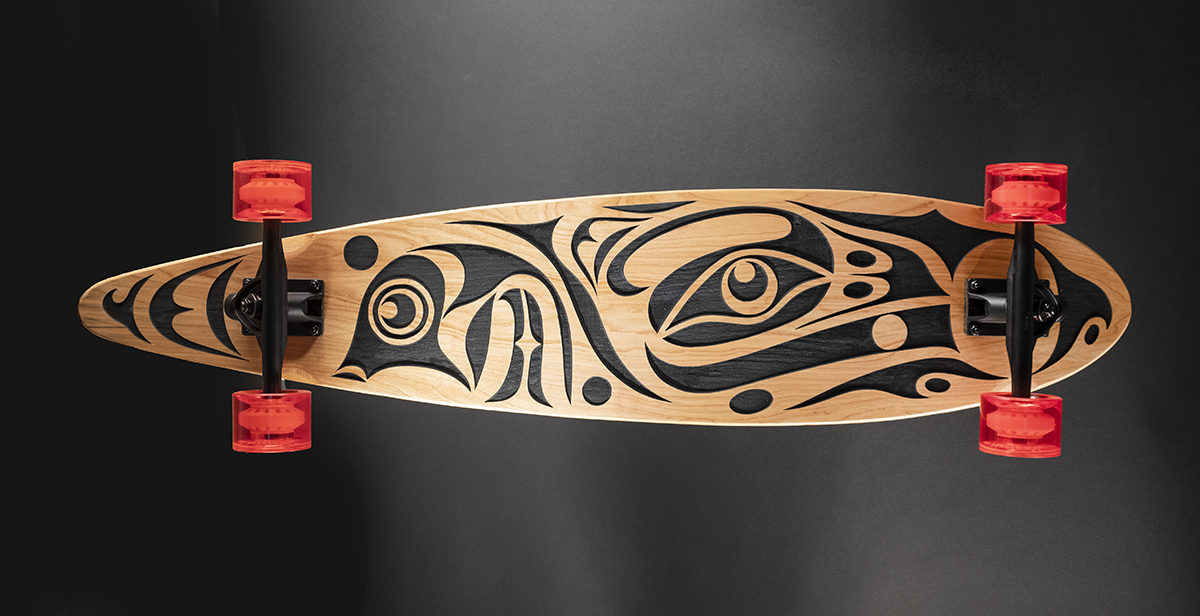 Trevor HuntCarved & Painted LongboardSandblasted Longboard, Acrylic Paint, Wheels and TrucksSOLD
Trevor HuntCarved & Painted LongboardSandblasted Longboard, Acrylic Paint, Wheels and TrucksSOLD -
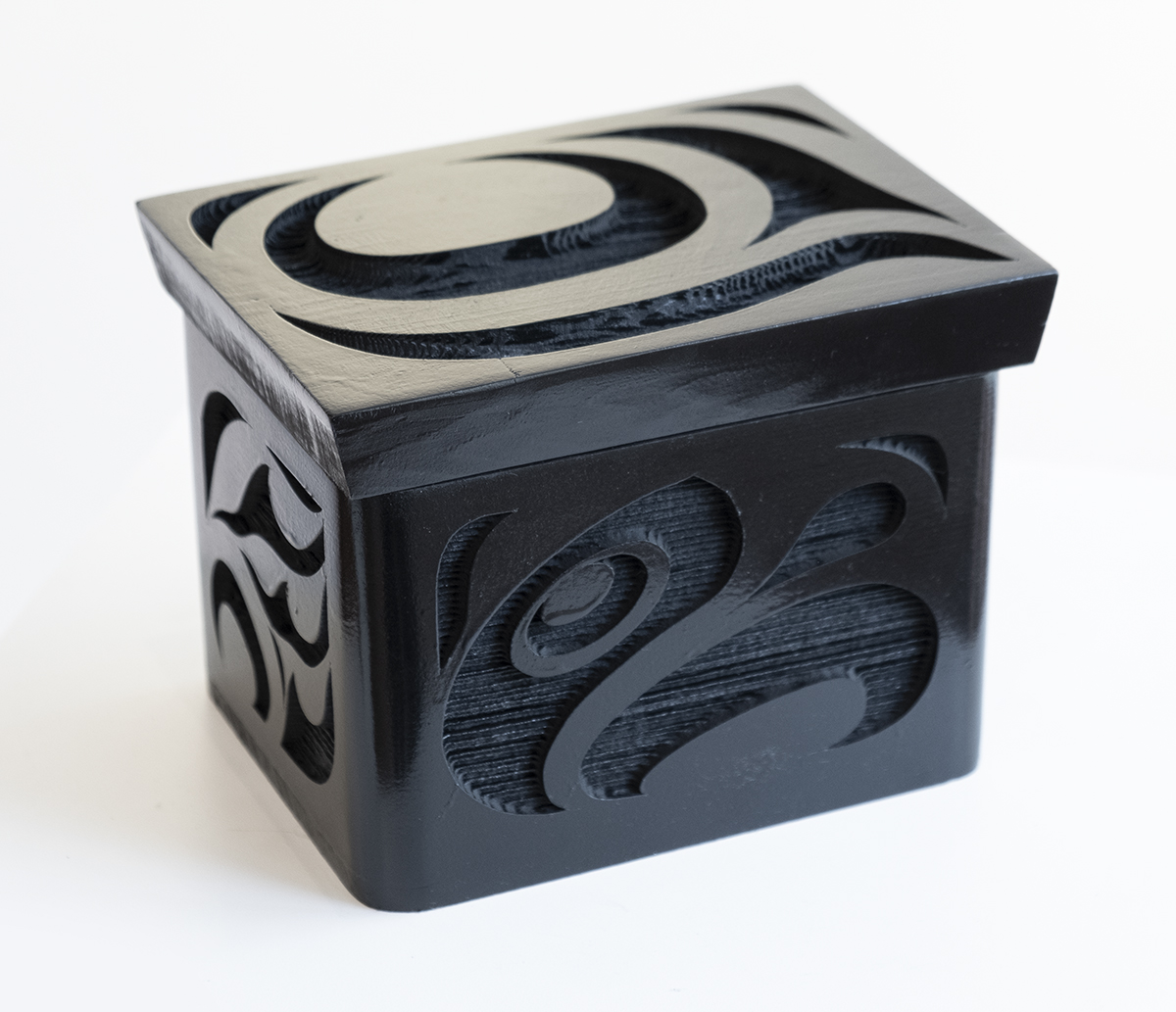 Trevor HuntEagle, Bear & Sockeye Bentwood BoxSandblasted Yellow Cedar, Acrylic
Trevor HuntEagle, Bear & Sockeye Bentwood BoxSandblasted Yellow Cedar, Acrylic- 5.75"h
- 7.75"w
- 5.88"d
SOLD -
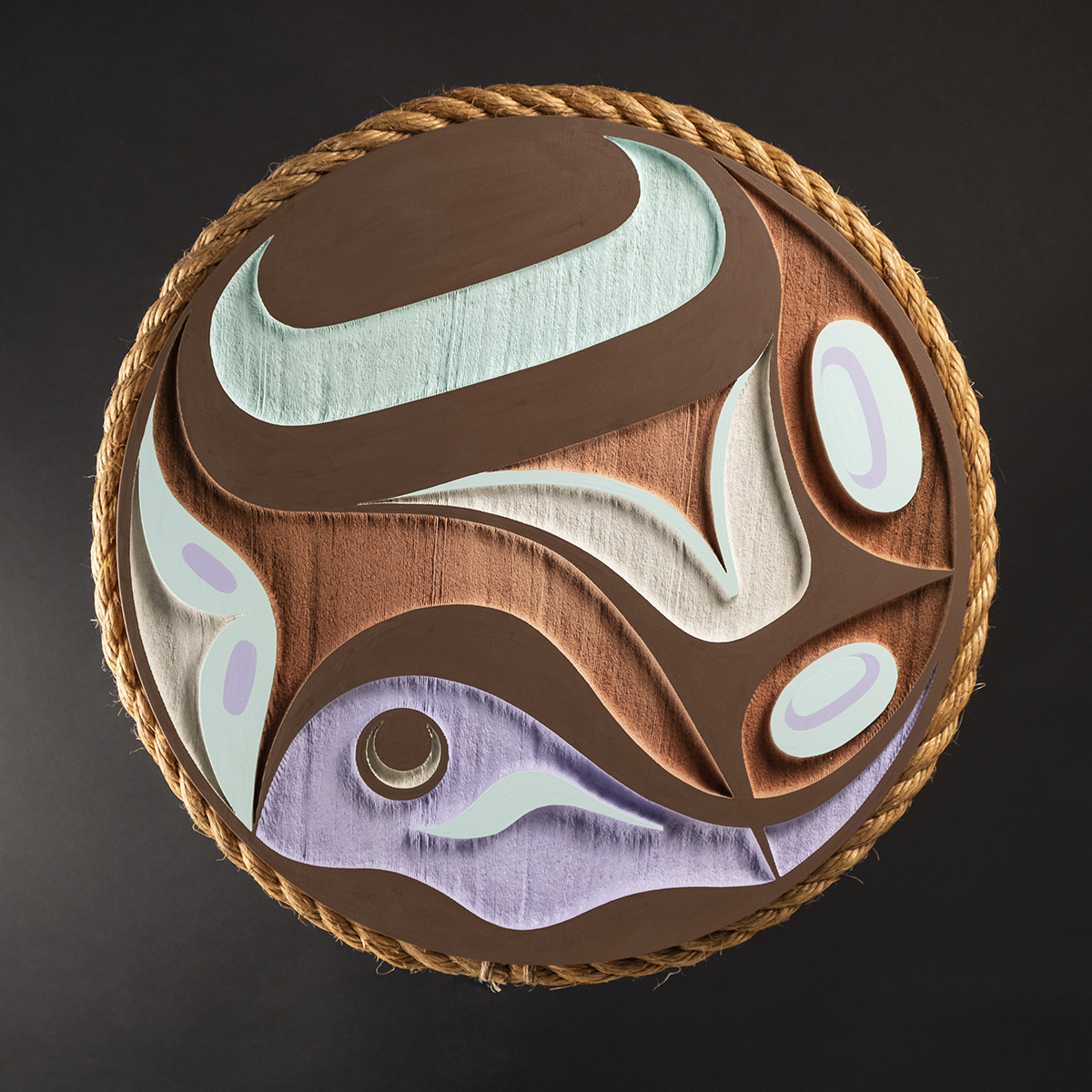 Jason Henry HuntThe EscapeSandblasted and Painted Old Growth Western Red Cedar, Rope
Jason Henry HuntThe EscapeSandblasted and Painted Old Growth Western Red Cedar, Rope- 19.5"h
- 19.5"w
- 1.63"d
SOLD
Jason Henry Hunt Born in Victoria in 1973, Jason is the son of Kwagulth carver and artist, Stanley Clifford Hunt. Following in the footsteps of his father and uncles, Tony Hunt and Richard Hunt, Jason has merged his trained indigenous artistic capabilities with a unique, recognizable style that is sought after by collectors throughout North America and in Europe.
Dedicated to the values of old world craftsmanship, and favouring the use of hand tools to carve and finish his works, Jason creates signature pieces that range from totem poles and large scale panels to masks, and paintings. Today, Jason is a steward of a rich legacy of creativity that traces its roots from his father through his grandfather, Henry Hunt, to his great-grandfather, Mungo Martin (both widely credited with teaching many of today’s leading artists). Jason’s work explores the distinct culture and art form of the Kwagulth people while reflecting the vibrant history and knowledge of generations of acclaimed artists.
He has been painting and carving original graphic interpretations of Kwakiutl myths and stories for many years, beginning under the tutelage of his father Stan and his brother Jason. His others teachers include Tim Alfred and David Knox.
He was part of a group–which included his brother Jason, and cousins, Mervyn Child, and Calvin Hunt–that carved a massive 52 ft totem pole. He recently completed a thirty-eight foot painting of a Killerwhale on the roof of a resort in Telegraph, B.C. and designed the logo for the Thunderbird Shopping Plaza in Port Hardy, B.C. In 1994 he was chosen to be published after a nationwide search for young artists. In 1995 he designed the logo for Kwakiutl District Counsel. Trevor currently lives in Fort Rupert, the traditional home of the Kwakiutl people, with his wife and children. He continues to study the Kwakiutl art form.
The Hunt Family gained international recognition through its oldest member, George Hunt. George was born in 1854 at Fort Rupert, British Columbia, the second of eleven children of Robert Hunt, a Hudson’s Bay Company fur trader from Dorset, England, and Mary Ebbetts (Ansnaq) (1823-1919), a member of the Raven clan of the Taantakwáan tribe of the Tlingit nation. Years later, George became a consultant to the American anthropologist Franz Boas with whom he collected hundreds of Kwakiutl artifacts for an exhibit at the 1893 World’s Columbian Exposition in Chicago. George was considered a linguist and ethnologist in his own right. Through marriage and adoption he became an expert on the traditions of the Kwakwaka’wakw of coastal British Columbia. During his lifetime, George wrote thousands of pages of description of Kwakiutl culture over the next decades. Today, the Hunt family comprises of a large number of internationally acclaimed artists.
A note on spelling: The spelling of the Hunt family’s tribal affiliation has changed throughout the decades, and continues to evolve. It is spelled variously: Kwakiutl, Kwagiulth, Kwaguilth, Kwagulth, and Kwaguł. Out of respect for each artist’s preference, each of Jason and Trevor’s preferred spellings are used in reference to their tribal affiliation. Learn more about their heritage here: http://www.kwakiutl.bc.ca/Our-Land
Getting to know the artists:
Stonington Gallery speaks with Trevor Hunt about process:
When I make my art I listen to Tupac every day, from sanding with headphones, to the Bluetooth in my shop.
My favourite knifes to use is the first straight knife I ever received from my father , as well as a planing knife I received from my uncle, Tony Sr. When I create pieces with my sandblaster it has no difference to me whether it’s being blasted or hand carved , all the pieces deserve the same amount of love, respect, time and patience as the other.
I started using sandblasting through John Livingston over three years ago; he showed me everything I needed to know, and I listened closely to his words. Today, I make the pieces from beginning to end myself. From the mill to my home, to planning and laminating the panels, to rounding and sanding. Then, wrapping in rubber, designing, cutting out, right down to the sandblasting. It’s a long, rewarding process to be able to do this at my home, in my yard, at my shop.
Nothing leaves my shop until I am completely happy with the piece. They are all my children that I am releasing into the world , to tell whatever story the person sees through their eyes. I believe our art has a history to tell in each piece, but to those not familiar with that, each piece speaks to them in a different way.
When I paint, I enjoy using a little brighter than average colours, as I enjoy making relatable, peaceful pieces. I hope my pieces spread joy on the walls of the people who desire to collect them.
Doing what you love for a living is the greatest gift I could have ever wished to inherit from my past family members.
The creative process that flows through my veins, are strong with Kwakiutl form lines. I enjoy carving the poles the most I think: it’s pure pleasure to walk outside my shop, round a log, and begin to shape this old red cedar log into a treasured piece in someone’s house or condo.It’s a lot of work being an artist, and that’s what I like about it: that it’s a lot of work.
Stonington Gallery speaks with Jason Hunt about his career, outlook, and process:
1. What is your favorite music to listen to while working?I tend to mix it up a lot and I like a lot of different music. Lately it’s been a rotation of Talking Heads, Arcade Fire and Dean Martin.2. Your favorite tool or tools?I have a good many knives and adzes but my favourite is an angled planer knife I made probably 20 years ago. It’s been so handy and makes smoothing so much easier. However it’s had so much sharpening over the years that I’m on the lookout for a replacement blade for it.3. I know there are many things you have learned from your father, Stan Hunt, but could you share one with us?Dad taught me that when you think you’re done your piece, look over it again. Is there anything that bothers you or doesn’t look right to you? To go back and fix anything no matter how small. It’s that attention to detail I’ve always remembered. To this day I always have Dad in the back of my head when I’m working on a piece.4. What does it feel like to sing with your family?I’m a little jealous of the singers to be honest, I’ve never been a singer. I do like to get up with them and drum when I can. Not that anyone would say I’m a drummer either but I try!5. Do you have a traditional mask from your Kwakiutl/Kwagulth culture that is your favorite to carve?When I first started carving way back when, dad started me out carving masks in repetition to learn the forms. 5 bears, 5 pugwis, 5 owls etc. The owl is the one I have always gone back to though. I’ve done a lot of owls over the years and feel a real connection to them.6. You are both using sandblasting as a way to carve the cedar, what do you most enjoy about how this process carves the wood?Since day one, I’ve always knife finished my pieces and rarely sanded or used many power tools. Sandblasting to me offers a new way to design. I feel like it’s almost like a good cross between a painting and a carving. There’s freedom of design in that there are designs you can sandblast that would make no sense as a knife finished piece.7. Is there a particular place on Vancouver Island that you feel most connected to?I’ve always been back and forth between Victoria and Fort Rupert so both places are home for me. I love downtown Victoria and all the great restaurants and the architecture of many of the older buildings. In Fort Rupert I love to explore the beach and the islands in our bay.8. Do you have a favorite Season? Why?Not sure I have a favourite season but if I had to choose I would say spring. The bit of warmth bringing new life to the world is always amazing to see. Waiting for the bears to make their first appearance is fun at that time of year as well.9. Favorite color or color combination?My go to colour combination in the last few years seems to be a strong black, red and green. I try to mix up colours and have never been shy to doing something different. It seems normal now to see pretty much any colour used on northwest coast art but it wasn’t always like this. I remember one time going into a respected gallery in Vancouver with a piece painted in pink and lavender. The gallery gave me a dressing down about doing what they said was designer colours even though they liked it. Now years later it’s not even talked about it’s just normal to see different colour combinations.10. Your art dream?My art dream is to do some bigger public works type pieces with my brother and my Dad. I’ve been lucky over my career to be able to work with both of them fairly regularly including some bigger works but it would be fun to do a contemporary project with them. Keeping my eyes open for the opportunity!
